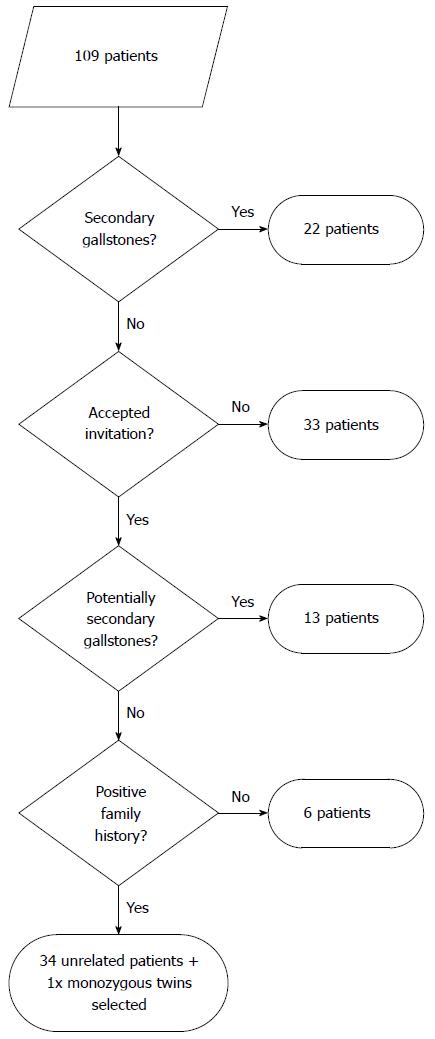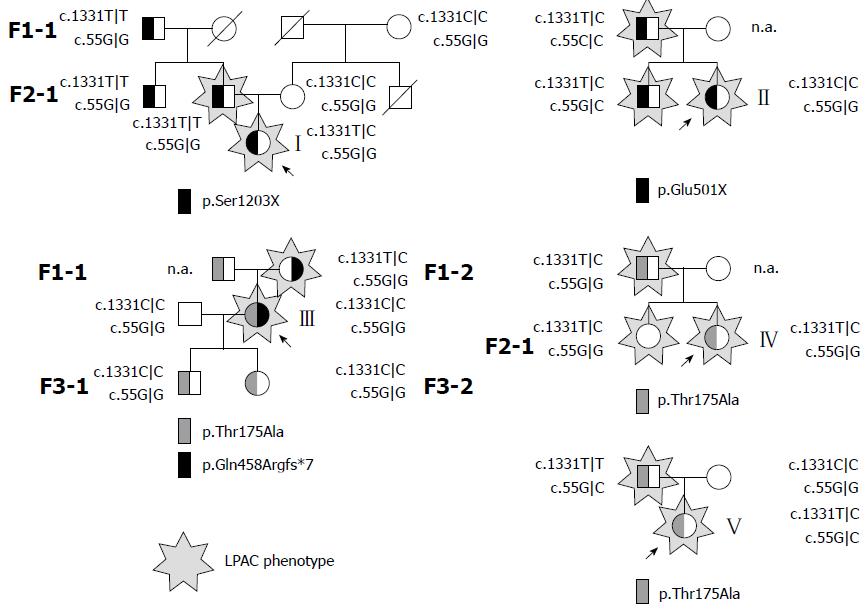Copyright
©2014 Baishideng Publishing Group Inc.
World J Gastroenterol. May 21, 2014; 20(19): 5867-5874
Published online May 21, 2014. doi: 10.3748/wjg.v20.i19.5867
Published online May 21, 2014. doi: 10.3748/wjg.v20.i19.5867
Figure 1 Flowchart describing the algorithm for selection of pediatric patients with low phospholipid-associated cholelithiasis syndrome-like idiopathic gallbladder gallstones.
Figure 2 Family trees of the five unrelated female probands with low phospholipid-associated cholelithiasis syndrome and ABCB4 mutations.
Phenotype of low phospholipid-associated cholelithiasis syndrome (LPAC) is indicated with gray asterisks, index patients are marked with arrows. Genotypes for ABCB11 c.1331T>C and ABCG8 c.55G>C are shown at the genealogical symbols. n. a. - DNA not available. The father´s brother of the proband I (F2-1) aged 53 years had no signs of LPAC. The proband´s grandfather (F1-1) developed gallstones after 40 years of age. Similarly, the father of proband III (F1-1) experienced his first attack of biliary pain at the age of 60 years. His DNA sample was not available for analysis; however, he is most likely a heterozygous carrier of c.523A>G (p.Thr175Ala) as depicted. The children (F3-1 and F3-2) of proband III are nine year old twins with no signs of LPAC. The DNA of the sister of proband IV (F2-1), who met the clinical criteria of LPAC, was analyzed for ABCB4 mutations with negative results.
-
Citation: Jirsa M, Bronský J, Dvořáková L, Šperl J, Šmajstrla V, Horák J, Nevoral J, Hřebíček M.
ABCB4 mutations underlie hormonal cholestasis but not pediatric idiopathic gallstones. World J Gastroenterol 2014; 20(19): 5867-5874 - URL: https://www.wjgnet.com/1007-9327/full/v20/i19/5867.htm
- DOI: https://dx.doi.org/10.3748/wjg.v20.i19.5867














